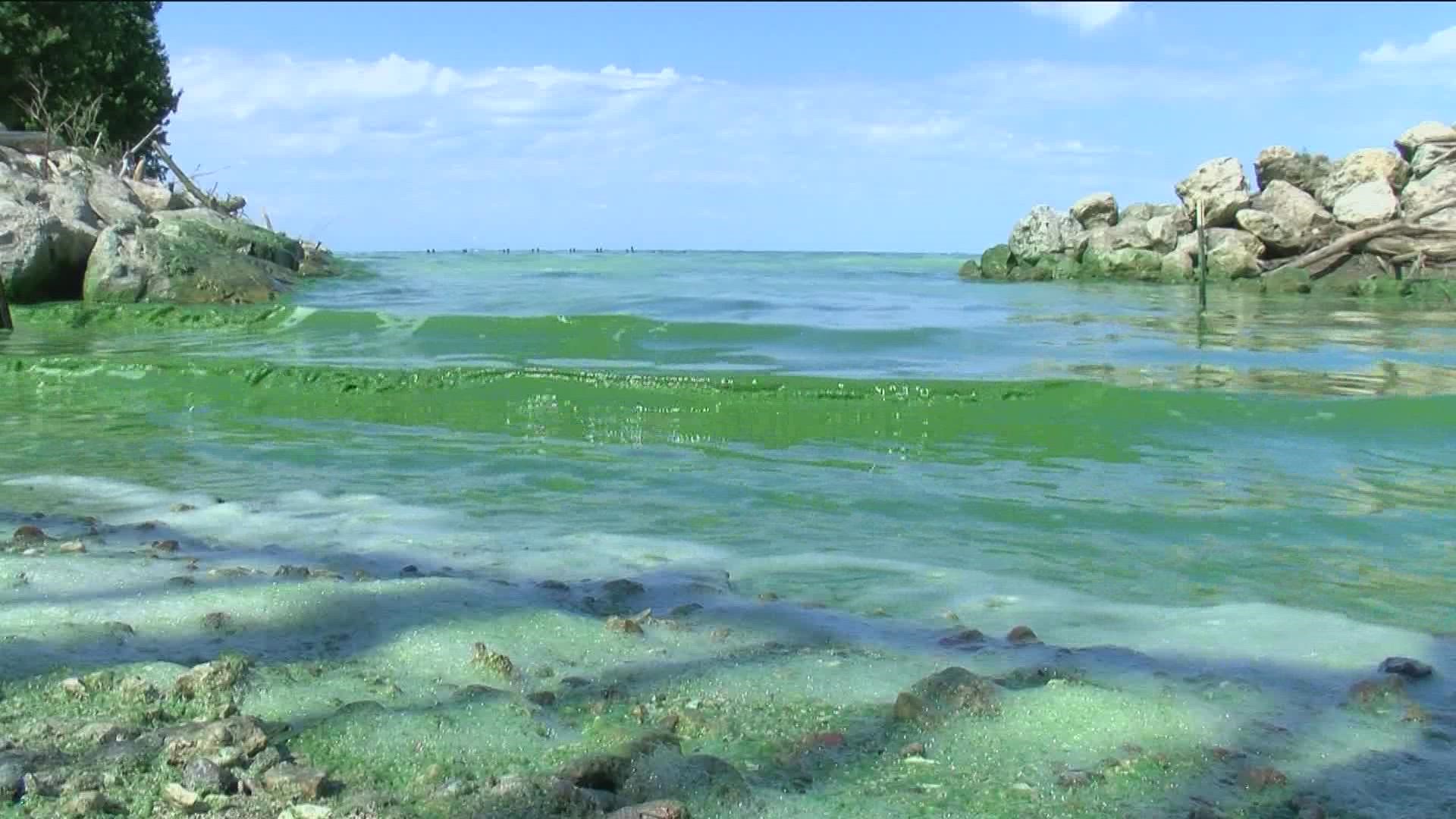PORT CLINTON, Ohio — Another algal bloom is developing on Lake Erie, and Waterkeeper Sandy Bihn says it impacts the daily lives of shoreline communities in more ways than one.
"Economic, health, recreational, just enjoyment, wildlife and everything else" are some of the ways, she said.
Algal blooms can take over entire sections of the lake by feeding on the plentiful phosphorus runoff from factory farms, releasing toxins into the water with their trademark putrid smell.
"If you go in the green water, people report diarrhea, and if you have an open cut, you can get infections in the open cut, and it can be quite serious," said Bihn.
When the water turns green, swim advisories are sent out by lakeshore communities, hurting tourism.
Research from Ohio State University shows that for every new microgram per liter of algae, the value of homes near the lake go down by 1.7%. Water bills go up for residents too, who sometimes pay up to $100 dollars more per month for additional water filtration and cleaning.
This year, the National Oceanic and Atmospheric Administration predicts the lake will see a smaller bloom.
In 2014 they made the same prediction, the same year algae in the lake blew over Toledo's water intake valve, making the city's tap water undrinkable for hundreds of thousands of people.
The dangers of algal blooms are becoming the new normal for lakeshore residents, but NOAA scientist Rick Stumpf said that doesn't mean it will stay this way forever.
He said if farmers reduce the phosphorus levels in their fertilizer, the algae would have nothing to feed on.
"There have been studies and research to show how we can change this," he said.
But whether that change will happen is another matter.
"We have attracted confined animal feeding operations, and we have increased those numbers dramatically through the years, and continue to increase them today," Bihn said. "So if we're trying to solve a problem, you can't keep adding to it while you're paying a lot of money to get it down."
Bihn said taxpayers pay a lot of money to make sure factory farms are using "best practices" to reduce runoff, but the factory farms still aren't required to measure the phosphorus levels before or after planting, and the algal blooms remain.
"Agriculture: if you want the money, step up and measure," she said.
Residents across the shoreline can expect the algal blooms to remain through the fall.

